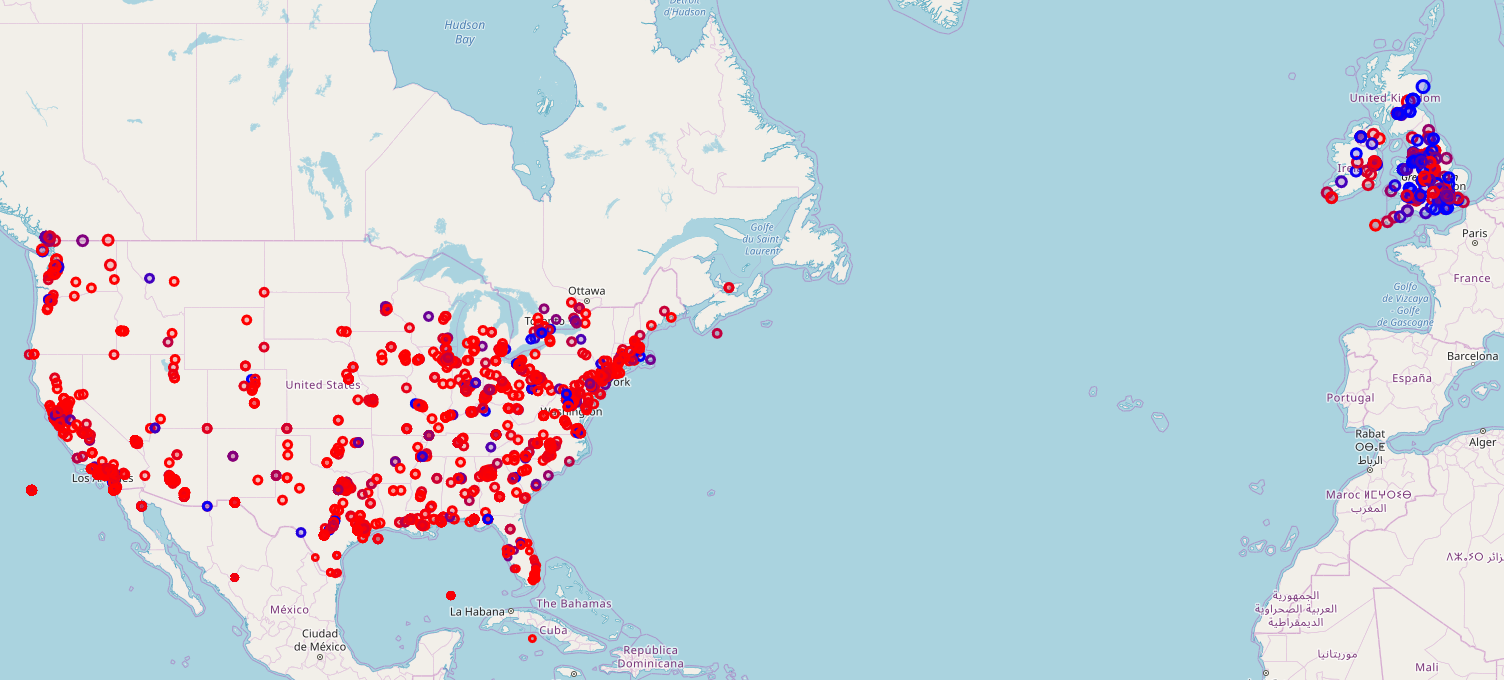DialectGram: Detection of Dialectal Changes with Multi-geographic Resolution Analysis

Introduction
Several computational models have been developed to detect and analyze dialect variation in recent years. Most of these models assume a predefined set of geographical regions over which they detect and analyze dialectal variation. However, dialect variation occurs at multiple levels of geographic resolution ranging from cities within a state, states within a country, and between countries across continents. In this work, we propose a model that enables detection of dialectal variation at multiple levels of geographic resolution obviating the need for a-priori definition of the resolution level. Our method DialectGram, learns dialect-sensitive word embeddings while being agnostic of the geographic resolution. Specifically it only requires one-time training and enables analysis of dialectal variation at a chosen resolution post-hoc – a significant departure from prior models which need to be re-trained whenever the pre-defined set of regions changes. Furthermore, DialectGram explicitly models senses thus enabling one to estimate the proportion of each sense usage in any given region. Finally, we quantitatively evaluate our model against other baselines on a new evaluation dataset DialectSim (in English) and show that DialectGram can effectively model linguistic variation.
Visualization Demo
You can visualize our word maps here: demo
Dataset
Geo-Tweets2019
The new English Twitter corpus (Geo-Tweets2019) used in this project can be found at Geo-Twitter2019, which is built for training dialect-sensitive word embeddings.
DialectSim
A new validation set for evaluating the quality of English region-specific word embeddings between the UK and the USA (i.e. at the country level). Can be found at ./data/DialectSim_{train,test}.csv in this repository.
Models
We include the baseline models (Frequency/Syntactic/GEODIST) and DialectGram model that are used in our project.
Baseline Models
FrequencyModelSyntacticModelGEODISTModel: a model to learn region-specific word embeddings using the Skip-gram framework. We implemented this model in PyTorch, based on the approach presented in Freshman or Fresher? Quantifying the Geographic Variation of Language in Online Social Media and the Java code for learning geographically-informed word embeddings.
DialectGram Model
A novel method to learn dialect-sensitive word embeddings from region-agnostic data, based on AdaGram [1, 2].
Requirements
Baseline Models
- cycler 0.10.0
- folium 0.10.0
- joblib 0.13.2
- kiwisolver 1.1.0
- matplotlib 3.1.0
- numpy 1.16.3
- pandas 0.24.2
- pep8 1.7.1
- plotly 4.1.1
- Pillow 6.0.0
- pip 19.1.1
- pyparsing 2.4.0
- python-dateutil 2.8.0
- pytz 2019.1
- reverse_geocoder 1.5.1
- scikit-learn 0.21.2
- scipy 1.3.0
- setuptools 41.0.1
- six 1.12.0
- torch 1.1.0
- torchvision 0.3.0
- tqdm 4.32.1
- wheel 0.33.4
DialectGram
- Julia 0.4
- To run
DialectGrammodel, we need to install Python-AdaGram package from source:$ pip install Cython numpy $ pip install git+https://github.com/lopuhin/python-adagram.git, and install AdaGram.jl as well:
Pkg.clone("https://github.com/sbos/AdaGram.jl.git") Pkg.build("AdaGram")
Sample Usage
Baseline Models
For Frequency and Syntactic models, we can build and directly evaluate them using {freq,synt}_eval.py:
# Frequency model
python freq_eval.py
# Syntactic model
python synt_eval.py
If we want to investigate a specific word, run:
# Frequency model
python frequencies.py "word_we_want_to_test"
# Syntactic model
python syntactic.py "word_we_want_to_test"
Training GEODIST
# using default parameters
python geodist_run.py
# or, we can specify the values of the following parameters:
python geodist_run.py --batch=128 --window=10 --freq=20 --step=80000 --dim=100 --lr=0.05 --dir='./outputs'
Evaluating GEODIST
python geodist_eval.py
DialectGram
Citation
Jiang, Hang; Haoshen Hong; Yuxing Chen; and Vivek Kulkarni. 2019. DialectGram: Detection of Dialectal Changes with Multi-geographic Resolution Analysis. To appear in *Proceedings of the Society for Computation in Linguistics. New Orleans: Linguistic Society of America.
@inproceedings{Jiang:Hong:Chen:Kulkarni:2020:SCiL,
Author = {Jiang, Hang and Hong, Haoshen and Chen, Yuxing and Kulkarni, Vivek},
Title = {DialectGram: Detection of Dialectal Changes with Multi-geographic Resolution Analysis},
Booktitle = {Proceedings of the Society for Computation in Linguistics},
Location = {New Orleans},
Publisher = {Linguistic Society of America},
Address = {Washington, D.C.},
Year = {2020}}